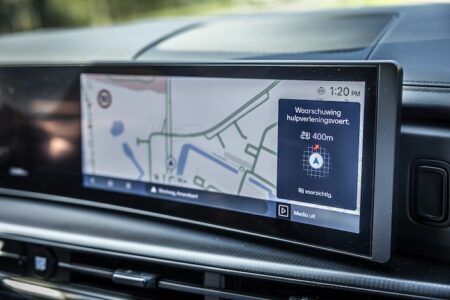In a move to make travel on Interstate 10 safer and more efficient, the transportation leaders in four states have created a coalition supporting innovation along the corridor. The fourth-longest and southernmost highway on the USA’s Interstate system, the I-10 runs from California to Florida.
The I-10 Corridor Coalition is modeled after a coalition involving 15 states that govern the Interstate 95 between Florida and Maine. The partnership is designed to remove what transportation officials refer to as ‘friction’ that makes the movement of goods less efficient than it could be, such as the variety of commercial vehicle permitting and inspection practices in each state along I-10. Proposed by the Arizona Department of Transportation’s (ADOT) director, John Halikowski, the agreement establishing the voluntary I-10 Corridor Coalition was also signed by: Malcolm Dougherty, director of the California Department of Transportation (Caltrans); Tom Church, cabinet secretary of the New Mexico Department of Transportation (NMDOT); and James Bass, executive director of the Texas Department of Transportation (TxDOT).
Commerce flowing on I-10 across California, Arizona, New Mexico and Texas is the engine of a powerful economic region. The Interstate is the primary trucking route to and from the Port of Long Beach, which connects to Asian markets, and connects the trillion-dollar markets of Southern California and central Texas. If the four states were combined, the region would have the 10th-largest economy in the world. The coalition will employ the transportation expertise of the states collectively to enable resource sharing, joint testing and economies of scale. The partners will apply best practices to improve safety and efficiency along the corridor, improve freight movement, expand and coordinate the use of technology along the corridor, and promote cooperative planning. The coalition will also engage with other levels of government and private stakeholders throughout the corridor, in order to achieve the goals of ‘friction-free’ travel. In order to provide a seamless east-west corridor, in time, the I-10 Coalition would like to be joined by the other states that the route passes through: Louisiana, Mississippi, Alabama and Florida.
Outlining a vision for the safer, more efficient movement of commercial and non-commercial traffic, Halikowski said, “The efficient flow of commerce in Arizona drives our state’s economic vitality. This agreement with our transportation partners in California, New Mexico and Texas, will work to build a reliable, friction-free I-10 corridor to support Arizona’s businesses and export industries. We want to see the day when a truck or a non-commercial vehicle can travel the 1,700 miles (2,735km) between Los Angeles ports and Houston ports, safely, efficiently and without delay. Someday, we want the I-10 Corridor to be filled with truck platoons and connected vehicles, weigh-in-motion sensors, and automated truck parking lots.”




